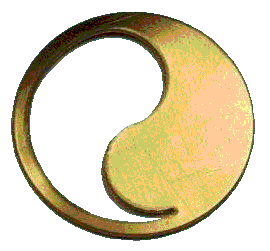
Madam C.J. Walker's - Wooton Desk
 Madam C.J. Walker's - Wooton Desk |
Shoportunity(Where Shopping & Opportunity Meet)eMail: ShoportunityPage PAA001 (Revised 08/23/2010) |
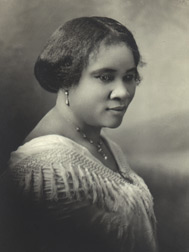 |
Sarah Breedlove, who later became known as Madam C. J. Walker, was born
into a slave family to parents Owen and Minerva Breedlove. She had one
older sister, Louvenia. Her parents were slaves on Robert W. Burney's
Madison Parish farm which was a battle-staging area during the Civil
War for General Ulysses S. Grant and his Union troops.
|
They had a daughter, Lelia (later known as A'Lelia Walker). When Lelia was only two years old, McWilliams died. Sarah's second marriage to John Davis August 11, 1894 failed and ended sometime in 1903. She married for the third time in January, 1906 to newspaper sales agent, Charles Joseph Walker; they divorced in 1912. |
Madam Walker was an entrepreneur who built her empire developing hair products for black women. She claims to have built her company on an actual dream where a large black man appeared to her and gave her a formula for curing baldness. When confronted with the idea that she was trying to conform black women's hair to that of whites, she stressed that her products were simply an attempt to help black women take proper care of their hair and promote its growth. |
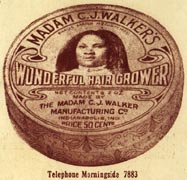 |
Madam Walker was quite the business woman. Her third husband, Charles Walker and her daughter, Lelia both had roles in the growth and day-to-day operations of the business. In September, 1906 Madam Walker and her husband toured the country promoting their products and training sales agents while Lelia ran a mail-order operation from Denver. From 1908 to 1910 they operated a beauty training school, the Lelia College for Walker Hair Culturists, in Pittsburgh. In 1910 they moved the central operations to Indianapolis, then the country's largest manufacturing base, to utilize that city's access to eight major railway systems. At this height of success, Madam Walker gathered a group of key principals to run the company. |
Madam Walker became an inspiration to many black women. Fully recognizing the power of her wealth and success she lectured to promote her business which in turn empowered other women in business. She gave lectures on black issues at conventions sponsored by powerful black institutions. She also encouraged black Americans to support the cause of World War I and worked to have black veterans granted full respect. |
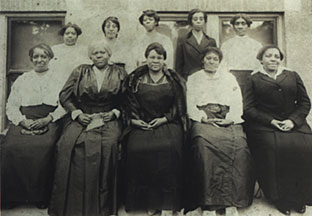 |
After the bloody East St. Louis Race Riot of 1917, Madam Walker devoted herself to having lynching made a federal crime. In 1918 she was the keynote speaker at many National Association for the Advancement of Colored People (NAACP) fund raisers for the anti-lynching effort throughout the Midwest and East. She was honored later that summer by the National Association of Colored Women (NACW) for making the largest contribution to saving the home of abolitionist Frederick Douglass. She donated large sums of money to the NAACP's anti-lynching campaign and later in her life revised her will to support black schools, organizations, individuals, orphanages, retirement homes, as well as YWCAs and YMCAs. |
In May 1918 Madam Walker moved to her villa in Irvington-on-Hudson, New York (67 North Broadway). It was designed by Vertner Woodson Tandy, the first licensed black architect in NY State. She named it "Villa Lewaro" using the first two letters of her daughter's name (Lelia Walker Robinson). The twenty room Villa was furnished at a price of $600,000. Amongst other furnishings, it had a gold-plated Weber piano and phonograph, an Estey pipe organ, Hepplewhite furniture, a Wooton Patent Secretary Desk, Persian rugs, Aubusson tapestries, huge oil paintings, fine China and two imported Japanese prayer trees. Her neighbors included industrialists Jay Gould and John D. Rockefeller. The grand estate served not only as her home but as a conference center for summits of race leaders to discuss current issues. |
Madam Walker died at Villa Lewaro at the age of 51 on Sunday, May 25, 1919 from complications relating to hypertension. Upon her death she was considered to be the wealthiest African-American woman in America and known to be the first African-American woman millionaire. Some sources cite her as the first self-made American woman millionaire. Her daughter Lelia succeeded her as president of the C. J. Walker Manufacturing Company. |
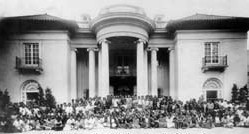 |
Villa Lewaro passed to her daughter, A'Lelia Walker. In need of money in 1930, A'Lelia closed the Villa and auctioned some of its furnishings because of the Depression's impact on Company's sales and the Villa's up-keep costs and property taxes. Since the furnishings were selling at Depression prices several personal items were withheld from the sale. A'Lelia honored her mother's request and on her death in August 1931, bequeathed the Villa to the NAACP. An unpaid mortgage kept the NAACP from accepting the gift and the residence was sold in early 1932 for a Depression-imposed $47,500. Villa Lewaro became a retirement home for the Companions of the Forest of America, a women's benevolent organization with no black members. In 1950 the Villa housed the Anne E. Poth Home for the Aged. Little attention was paid to the Villa until a group of black preservationists lobbied to have it listed in the National Register of Historic Places during America's bicentennial in 1976. Over the years a number of African-American organizations tried to buy the Villa but these efforts failed. Then in 1985, as the elderly residents passed away, Villa Lewaro went back on the market and its remaining contents were sold at public auction. Ingo and Darlene Appel submitted a successful bid for the Villa and moved into the Villa with their four children. |
Included in the contents of Madam Walker's Villa was her esteemed personal desk, a Wooton Patent Secretary Desk. The Wooton Desk was officially called the "Wooton Patent Cabinet Office Secretary" and came into being when the US Patent Office issued patent number 155,604 to William S. Wooton on October 6, 1874. The Wooton Desk quickly became the embodiment of the phenomenon of conspicuous consumption which swept over moneyed society in the United States at the end of the 19th and the beginning of the 20th century. |
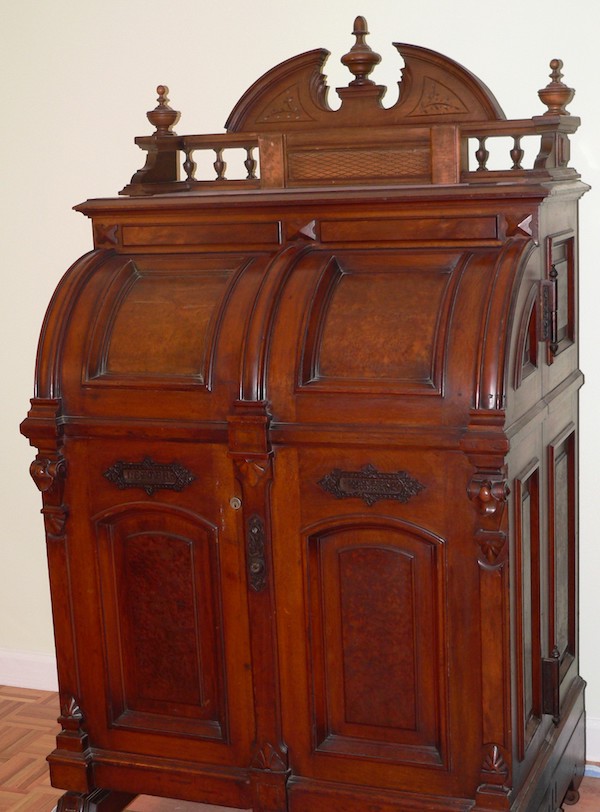 |
John D. Rockefeller, the Standard Oil Magnate was an early purchaser of a Wooton. The Wooton owned by Ulysses S. Grant, 18th President of the US is housed in the Smithsonian Institution. Other Wooton Desks were owned by G.B. Grinnell, founder of Iowa's Grinnell College; Sidney Lanier, poet; Joseph Pulitzer and Charles Scribner, publishers; Jay Gould, railroad magnate; and Governor Larrabee of Iowa. It is not known when Madam Walker purchased her Wooton Desk but in owning a Wooton, she joined an elite group, possibly becoming the first woman to own a Wooton. |
Richard Porcelli, former Mid-East Power Generation Sales Manager for the General Electric Company purchased at auction Madam Walker's Wooten Desk on the front steps of Villa Lewaro in 1985. It has been continuously maintained under humidity controlled air conditioned space to the present and is presently located in Wilmington, North Carolina. |
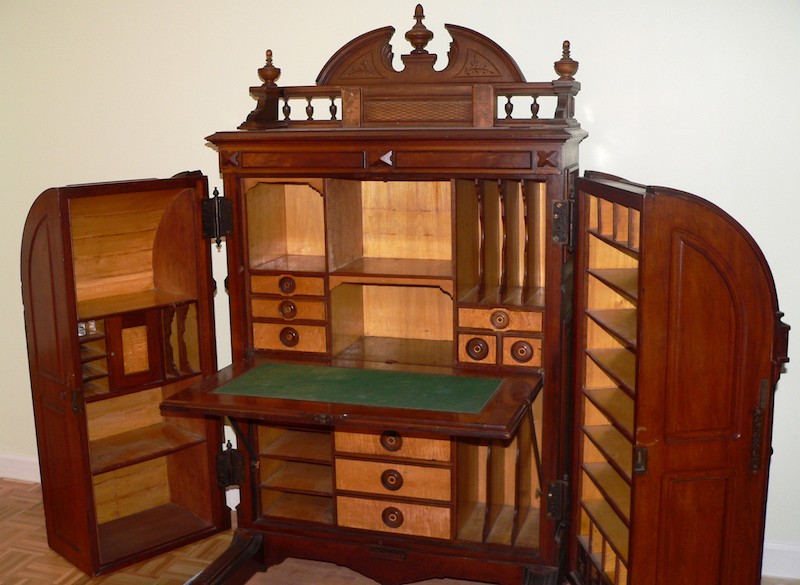 |
 |
eMail: Shoportunity |